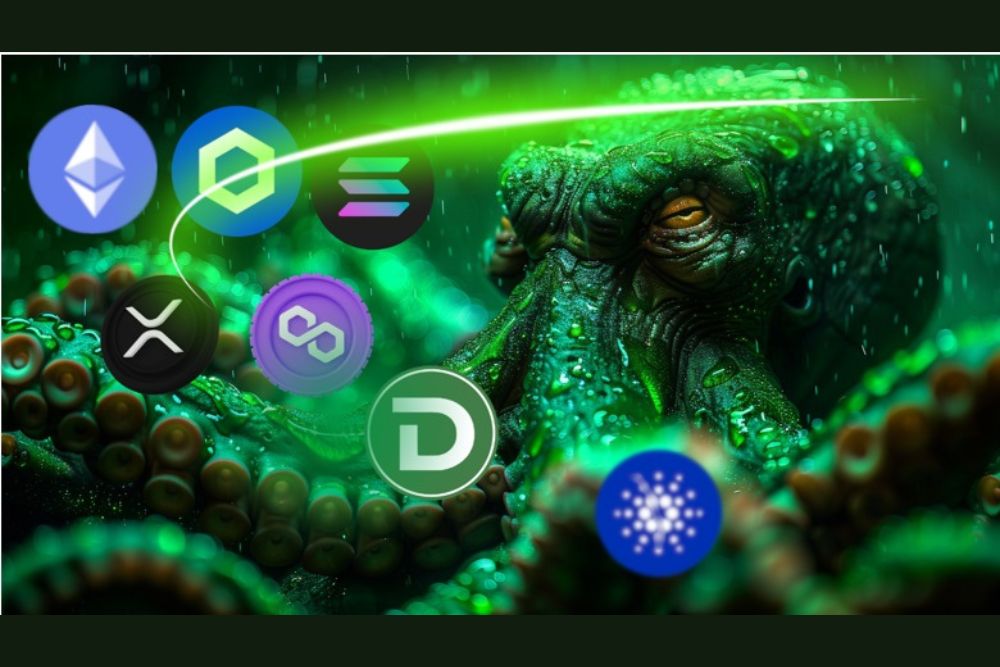Derivatives are instruments that obtain value based on the price of an underlying asset, such as a stock, bond, ETF, or commodity. Stock option contracts are securities that give traders the choice of buying a specific stock at a predetermined price on a future date. Options can be part of many different trading strategies, and their usage is integral to the stock market’s infrastructure.
This article will explain how call and put options work, the strategies investors utilize them for, and how they’re priced concerning the underlying asset. Options can be used for bullish, bearish, or neutral purposes, but they’re an advanced trading instrument and highly volatile, so it’s crucial to understand the risks and rewards.
Types
Call options and put options are the two types of contracts available. Traders can use any range of calls and puts together in an investing strategy, but all trades will consist of some combination of these two instruments, which track stocks and funds alike.
A call option gives a trader the right to purchase shares at a predetermined price. A put option is similar but gives the trader the right to sell shares at a predetermined price. How does this work? Each option has a buyer and a seller who writes the contract (which is why seller and writer are often interchangeable terms in options trading). The buyer pays an upfront fee called a premium to the seller for the contract, which gives the buyer the option to buy or sell the underlying asset from or to the seller.
Each contract represents a position of 100 shares, so if an option is exercised, the writer must take 100 shares from a put buyer or supply 100 shares to a call buyer. Writing options is riskier than buying them since losses can be unlimited. An option buyer only loses the premium paid for the contract if the option expires worthless.
Components
Each call or put option has four crucial components: the strike price, expiration date, premium, and underlying asset price.
The strike price is the price at which the buyer and seller of the option agree to initiate the contract. The expiration date is when the option must be sold or exercised. For example, if you buy a call option on XYZ stock with a $10 strike and June 21 expiration, you’re hoping the underlying asset will reach $10 or higher before the June 21 expiry. If the shares reach $12 on June 16, you can exercise the contract and buy 100 shares from the seller for $10 apiece or simply sell the option contract for a profit.
The seller of the option receives the premium, which is the upfront cost of the contract. Option premiums are priced based on factors like time, volatility, and rates of change. In a straight options trade, the seller hopes the underlying stock will never reach the strike price, allowing them to keep the premium as the contract expires with no value.
Trading
Most options trade on exchanges just like their underlying stocks. The Chicago Board Options Exchange (CBOE) is the most commonly used, but options can be traded in plenty of regulated entities nationwide. Exchanges are responsible for standardizing the terms of contracts and providing liquidity to the market. After the exchanges, clearinghouses process the trades, ensuring each seller has a buyer (and vice versa). Clearinghouses also ensure proper delivery of assets, like the underlying stock or commodity.
However, not all options trading is done on exchanges. Over-the-counter (OTC) options allow traders to customize strike prices and expiration dates on precise terms. OTC options are designed for advanced traders using complex strategies, and novices should be aware that unregulated options trades have higher counterparty and liquidity risk.
Strategies
Bullish, bearish, and neutral traders can use options to either supplement their investments or profit from speculation. Before diving into options strategy, it’s essential to know the difference between:
- In-The-Money (ITM) Options
- Out-of-The-Money (OTM) Options.
When an option is ‘in the money,’ the strike price has been reached, and the contract can be exercised for 100 shares of the underlying stock. This gives the contract intrinsic value, making it more expensive than an OTM contract. If a contract is ‘out of the money,’ the underlying asset has not reached the strike price, and the option will expire worthless if nothing changes before expiration. OTM options are riskier but less expensive than ITM options. You’ll need to check your options limitation with your broker to see what you can and can’t trade.
Bullish Strategies
- Long Call: The most straightforward bullish strategy, a long call, involves buying a call option on a stock you think will appreciate. Your break-even point will be the option strike price plus the premium paid.
- Bull Call Spread: A bull call spread involves two contracts. First, you buy a call option at a particular strike while writing a call with a higher strike. Risk is lower than buying a single call, but profit is limited to the split between strikes minus premium.
- Bull Put Spread: Purchase a put option at a specific strike while simultaneously writing a put at a higher strike. The lower strike put protects against unexpected drops but limits profit to the premium received for the higher strike put. Maximum loss is the difference between the strike prices.
Bearish Strategies
- Long Put: Buying a put option anticipating a decline in the underlying stock. If the stock declines to the strike price, you can exercise the contract or sell it for a profit.
- Bear Call Spread: Selling an OTM call option while buying a call with the same expiration closer to the money. Bear call spreads limit downside losses while capping profits at the premium received for the OTM call.
- Bear Put Spread: Buying a put option at a high strike while selling another put with the same expiry at a lower price. Max profit is limited to the difference in strike prices (minus premium), but losses are also limited.
Neutral Strategies
- Covered Call: If you own 100 shares of XYZ, you can write a call option with a strike above the current market price and profit from a flat market. If the stock doesn’t move or decline, you keep the premium as profit. If the stock rises above the strike, you surrender your shares to the buyer but keep the premium.
- Protective Put: Buying a put option on your stock is called a protective put. If your holdings decline, the price of the put should appreciate, limiting losses and acting as insurance.
- Straddles: To execute a straddle, you purchase call and put options with identical strikes and expirations. Straddles are only profitable during extreme volatility and carry significant upfront costs.
Spread Strategies
- Vertical Spread: Buying an option while selling another with the same expiration but different strike prices. Bullish vertical spread means selling the higher strike call and buying the lower strike, while bearish vertical spreads involve selling a low strike put and buying a higher strike one.
- Horizontal Spread: Like a vertical spread, you buy and sell options with the same underlying asset, with identical strike prices and different expirations. Also known as calendar spreads, the goal is to profit from the widening differences in option prices during volatile periods.
- Diagonal Spread: Mixing features of vertical and horizontal spreads, a diagonal spread involves a long option and an opposite short option with different strikes at the same expiration. But unlike vertical or horizontal spread, the trade involves an equal number of calls and puts.
Pricing
Options are valued based on two leading schools of thought: the Black-Sholes formula and the Binomial model. Investors use both to calculate option valuation but arrive at their conclusions differently.
Black-Sholes uses specific factors like volatility, underlying asset price, strike price, and time to expiration to arrive at a cost. Black-Sholes is commonly used in wealth management and reasonably easy to calculate.
The Binomial model is more direct, attempting to calculate each potential price movement over time. The result looks like a tree, with each branch representing a possible outcome based on changes in volatility, underlying price, or current interest rates.
Options Greeks
The Greeks are five main variables used to track option price movements:
- Delta – Measures option price in relation to underlying stock price
- Gamma – Tracks the rate of change between option price and stock price
- Vega – Measures how option price responds to implied volatility
- Theta – Also known as time decay, which tracks the option value as expiration approaches
- Rho – Measures response to interest rates (not commonly used)
Regulations
Both exchanged-traded and OTC options are governed by regulatory bodies. The SEC handles equity-based options trades, while the CFTC handles commodities contracts and OTC options. Both institutions work together to ensure the security and transparency of options markets.
Applications
- Hedging – Covered calls and protective puts protect against losses on assets you already own should fundamental or technical analysis predict a rocky road ahead.
- Speculation – Long calls and puts can add leverage to speculative positions.
- Arbitrage – Thanks to market efficiency, arbitrage opportunities are rare, but traders sometimes find discrepancies between option prices and underlying asset prices.
Risks
- Time Decay – As expiration approaches, options lose value regardless of whether OTM or ITM.
- Volatility Risk – Unexpected changes in volatility could cause massive option price declines.
- Assignment Risk – If you write an option and the buyer exercises it, you’ll be forced to send or accept the underlying stock.
- Liquidity Risk – If you buy far OTM options or options on obscure stocks, you may not find a seller when you want to close the position.
Frequently Asked Questions
A
A derivative agreement between two parties over the price of an underlying asset.
A
A stock option is a contract in which the buyer may purchase the underlying stock at a predetermined price.
A
Options are traded on exchanges like the CBOE and over-the-counter through direct networks.

